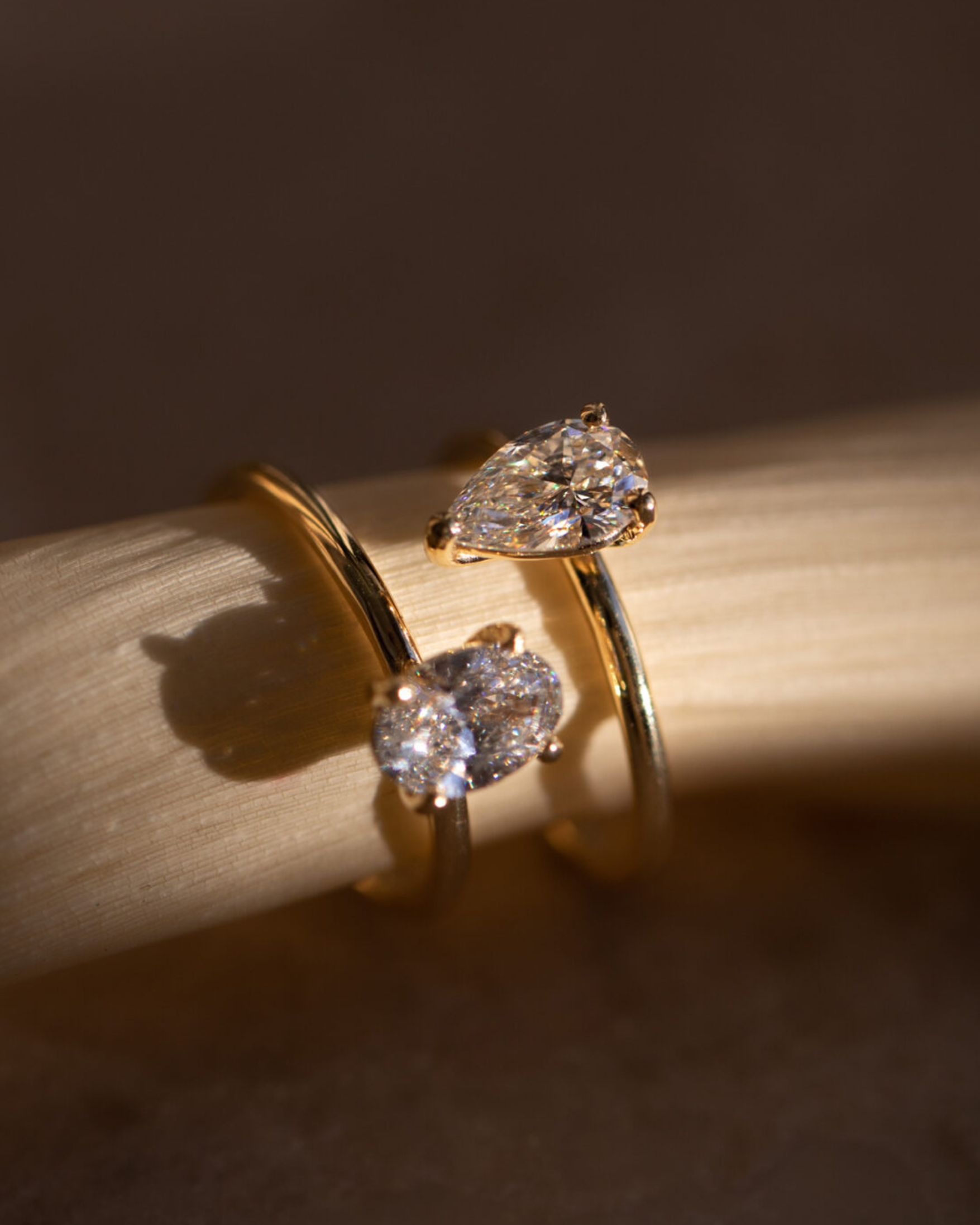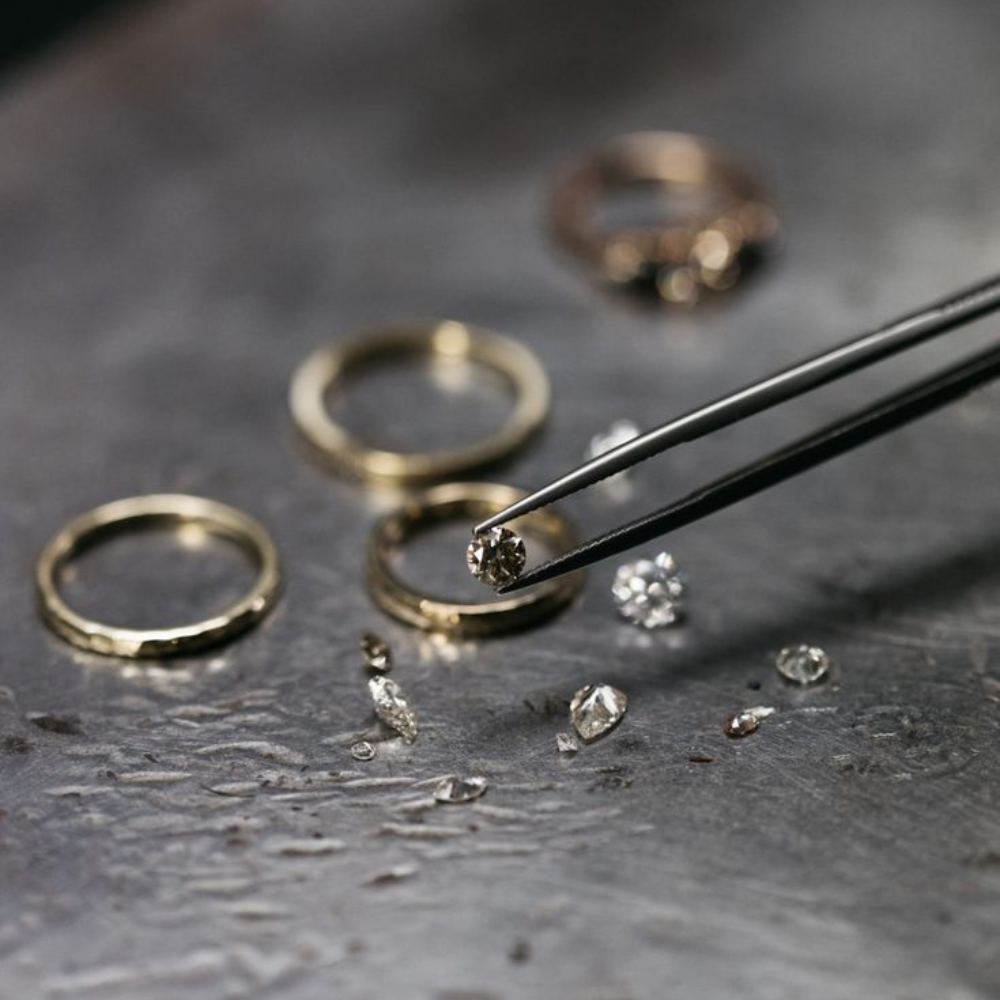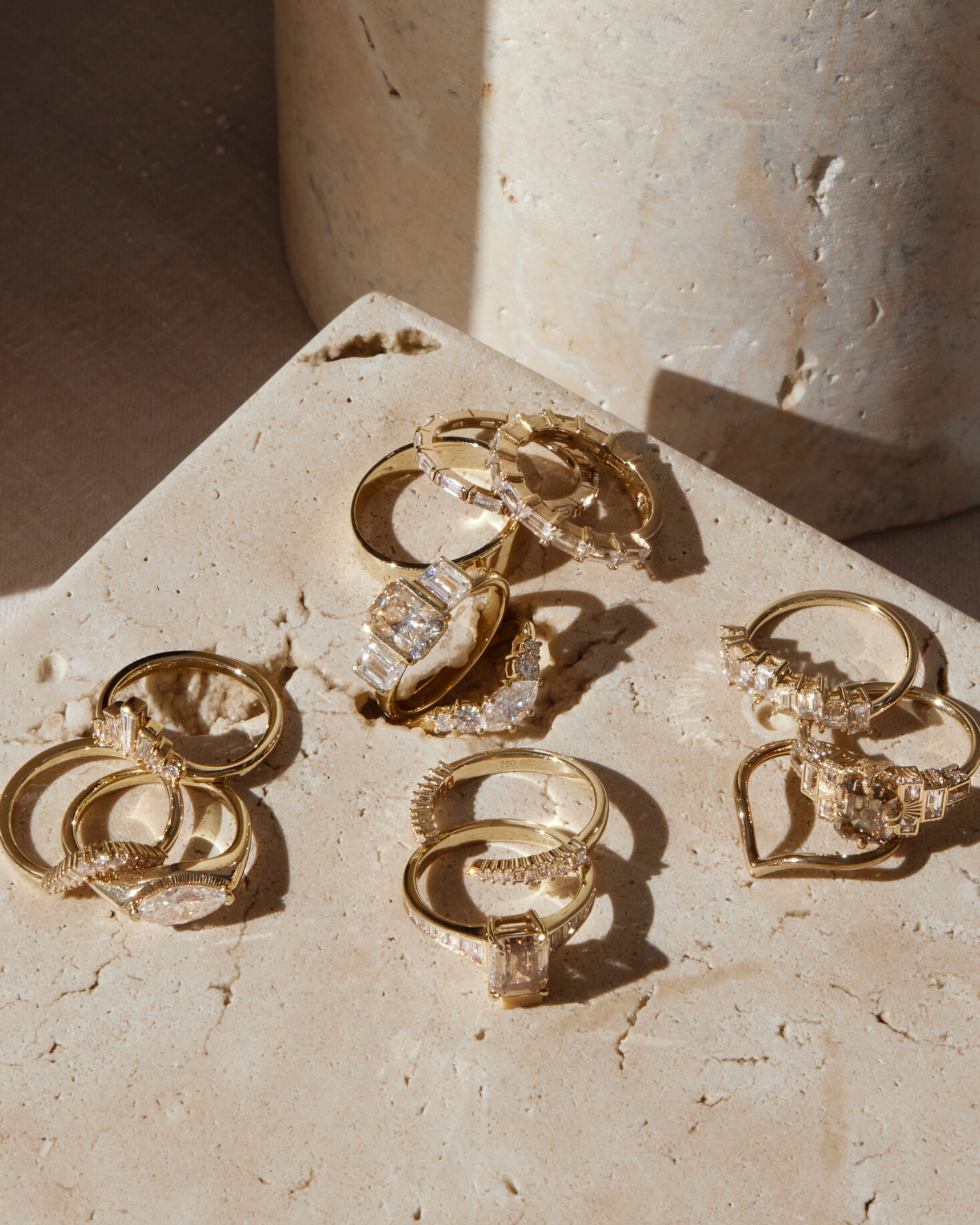Lab-Grown Diamonds as an Eco-Conscious Alternative
Lab-grown diamonds, crafted in controlled environments, offer an eco-conscious alternative by avoiding the harmful impacts of mining on the environment and its inhabitants. Compared to natural diamonds, these lab-grown gems have a significantly lower carbon footprint, making them a responsible and sustainable choice for conscientious consumers.
What are Lab Grown Diamonds?
Lab grown diamonds, also known as synthetic diamonds or lab created diamonds, are diamonds that are developed in a controlled laboratory environment using advanced technology to mimic the earth's natural process of crystallizing carbon into beautiful diamonds.
Lab-created diamonds have the same chemical and physical qualities as natural diamonds, therefore they are chemically, optically, and physically similar to earth-mined diamonds. They not only provide a sustainable and ethical alternative to mined diamonds, but they also have a lower price point without losing quality. So, if you're looking for a beautiful and environmentally sustainable option, consider the brilliance of a lab-grown diamond.

Are Lab-Grown Diamonds Real?
Yes! Lab diamonds are genuine diamonds, identical in every way (except price!) to earth-mined diamonds. Except that Sophia Manor's lab-grown diamonds outperform 99% of all other diamonds, regardless of their origin.
Grown diamonds, as opposed to cubic zirconia, moissanite, or a "look-a-like" diamond, are made entirely of crystallized carbon. Consider manufacturing ice in your modern freezer rather than acquiring it from a glacier. Both are frozen H2O, regardless of origin.
We are crystallizing carbon into magnificent raw diamonds, which are then cut, polished, and graded in the same way as diamonds mined on Earth are. Lab-created diamonds have the same visual, physical, and chemical qualities. They have the same refractive index, dispersion, and hardness as mined diamonds and are graded to the same standards by major independent gemological institutions such as the IGI, GIA, and GCAL.
LAB GROWN DIAMOND SCIENCE
How are Lab Grown Diamond Made
Grown diamonds are made one of two ways— either through High-Pressure High-Temperature (HPHT), or through Chemical Vapor Deposition (CVD). The majority of Sophia Manor’s diamonds are grown using CVD which has been the most successful method in producing higher quality diamonds.

Chemical vapor deposition (CVD)
Scientists begin the process of producing a Sophia Manor diamond by cutting a little piece of carbon called a seed. It is inserted into a low-pressure microwave chemical vapor deposition (CVD) chamber. Hydrogen and methane gasses combine with electrical energy to ignite a plasma ball. Following that, a cloud forms in the chamber, and carbon molecules rain down on the seed. Within six to twelve weeks, a large rough diamond is created. It is then cut, polished, and graded by the same world-class laboratories that certify mined diamonds.
Lab-grown Diamonds VS Natural Diamonds
Lab-grown diamonds and natural diamonds are both composed of carbon atoms arranged in a crystalline structure, but they differ in their origin and certain characteristics.
Lab Grown Diamond
Also known as synthetic or man-made diamonds, these diamonds are created in a controlled laboratory environment. They are produced using either High Pressure High Temperature (HPHT) or Chemical Vapor Deposition (CVD) methods.
Natural Diamond
Formed deep within the Earth's mantle under extreme pressure and high temperatures over millions or even billions of years, natural diamonds are brought to the surface through volcanic eruptions or other geological processes.
Created by replicating the conditions under which natural diamonds are formed, but the process is accelerated and takes a shorter time.
Mined from the Earth's crust.
Often less expensive than natural diamonds due to the controlled production process and shorter creation time.
Typically more expensive, as their formation is a natural and time-consuming process.
Easier to produce in larger sizes and quantities.
Larger, high-quality diamonds are rarer and, therefore, more valuable.
Generally considered to have a lower environmental impact, especially if produced using sustainable practices.
Mining natural diamonds can have significant environmental consequences, including habitat disruption and carbon emissions.

How Much Do Lab Grown Diamonds Cost?
Sophia Manor's manufactured diamonds are typically priced up to 50% lower than an earth-mined diamond of comparable quality. The price of a lab-grown diamond, like mined diamonds, is determined by characteristics such as carat weight, cut, color, and clarity. This affordability opens up a plethora of options, allowing you to select a larger or higher grade lab-grown diamond within your budget. So, if you're seeking for outstanding value without sacrificing beauty, lab-grown diamonds are an appealing and affordable option.
What factors affect the price of laboratory-grown diamonds?
Our supply chain is significantly shorter, which explains the price difference. Earth-mined diamonds can travel to five nations and pass through 20 hands before reaching the final consumer. Sophia Manor's lab-created diamonds travel from our laboratory to our casting house and then to you. It is not only more efficient, but it is also more cost effective and environmentally friendly.
Lab Grown Diamond FAQ's
How are Lab Grown Diamond Made?
Grown diamonds are made one of two ways— either through High-Pressure High-Temperature (HPHT), or through Chemical Vapor Deposition (CVD). The majority of Sophia Manor’s diamonds are grown using CVD which has been the most successful method in producing higher quality diamonds. Learn more about Sophia Manor’s History in lab diamonds.
What is chemical vapor deposition (cvd)?
Scientists start the process of growing a Sophia Manor diamond by cutting a small piece of carbon, known as a seed. It is placed in a low-pressure microwave chemical vapor deposition (CVD) chamber. Hydrogen and methane gases combine with electrical energy, which ignites a plasma ball. From there, a cloud forms in the chamber, and carbon molecules rain on the seed. Within six to 12 weeks, a sizable rough diamond is formed. It is then cut, polished, and graded by the same world-renowned labs that certify earth-mined diamonds. Learn more about Chemical Vapor Deposition Diamonds.
Can you tell the difference between an earth-mined diamond and a lab created diamond?
While both earth-mined diamonds and lab-created diamonds have the same chemical composition, only trained gemologists using advanced gemological equipment can detect differences in their growth patterns and inclusions. Advanced technology, such as UV fluorescence imaging and specific laser inscription patterns, aids in distinguishing between the two types. However, to the naked eye, without specialized equipment, it is nearly impossible to know the difference.
Do lab grown diamonds test positive on a diamond tester?
Yes, lab-grown diamonds do test positive on a diamond tester. Diamond testers work based on the principle of thermal conductivity, and lab-grown diamonds have the same thermal properties as natural diamonds, resulting in a positive test. These advanced testers can distinguish between diamonds and other gemstones, ensuring the authenticity of the stone. Whether mined or lab-grown, both types of diamonds will show a positive result on a reliable diamond tester, reassuring consumers and jewelers alike about the genuineness of the diamond they are examining.
Are lab grown diamond fake?
No, lab-grown diamonds are not fake. They are real diamonds with the same chemical composition as natural diamonds. The only difference lies in their origin. Lab-grown diamonds are created in controlled environments using cutting-edge technology. It's like getting your ice from your freezer versus getting ice from a glacier. These diamonds possess the same brilliance, hardness, and beauty as their mined counterparts.
Do all lab grown diamond look alike?
No, not all lab-grown diamonds look alike. Lab-grown diamonds exhibit the same variations in color, clarity, and cut as their mined counterparts. We put the right conditions together in a lab, but nature takes it from there and grows us a diamond. Advanced technology allows us to create a wide range of lab-grown diamonds with diverse appearances, catering to individual preferences and styles. From classic white diamonds to fancy colors, each lab-grown gem possesses a distinct allure.






